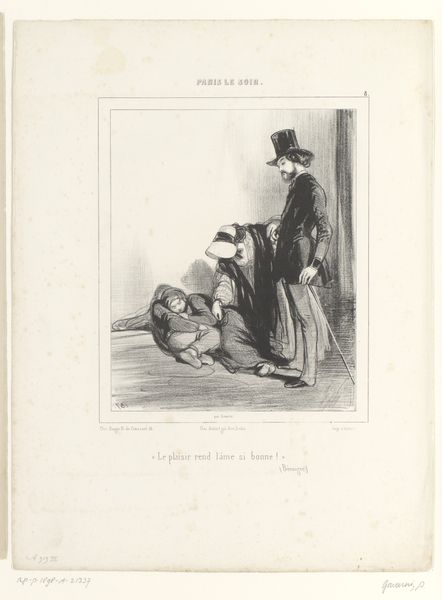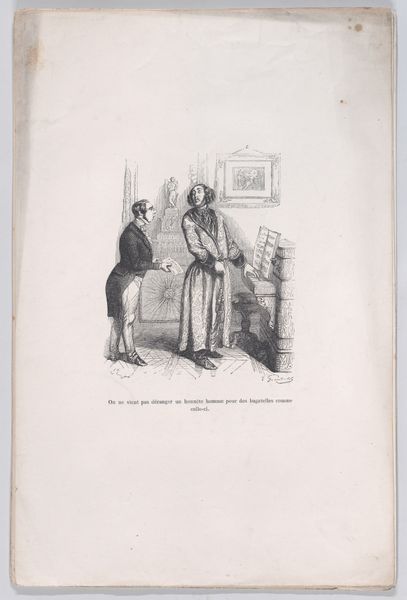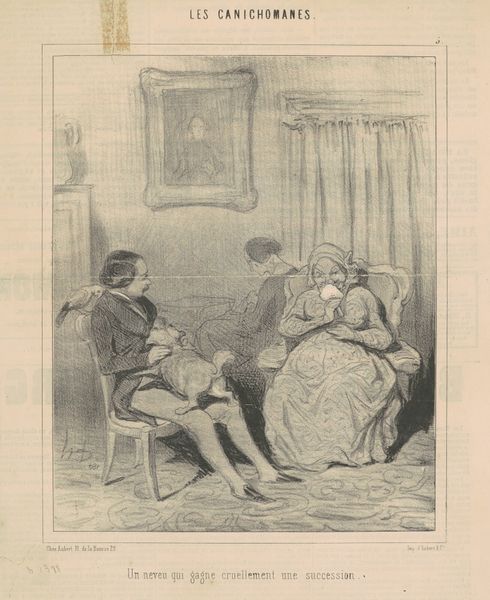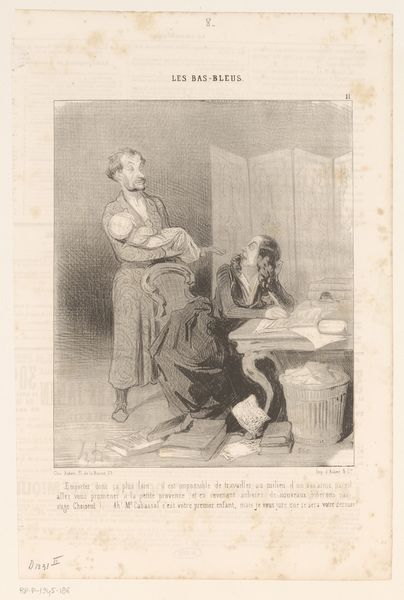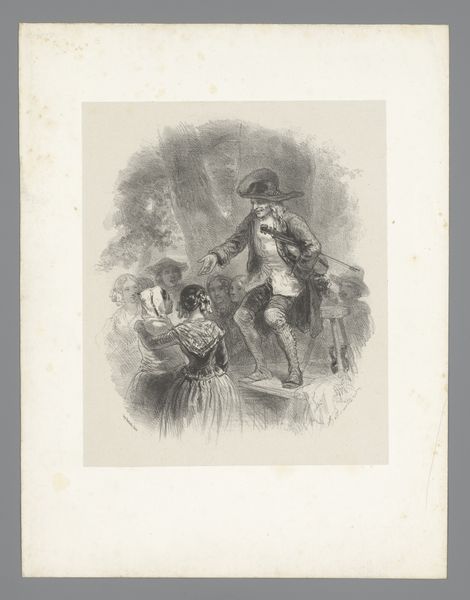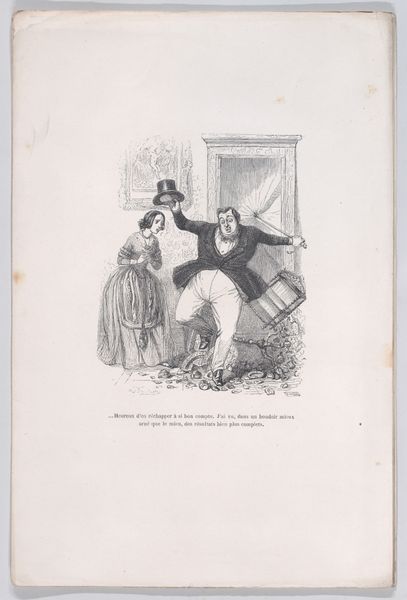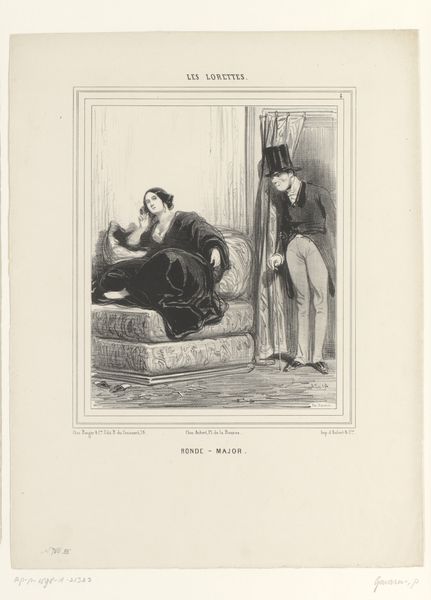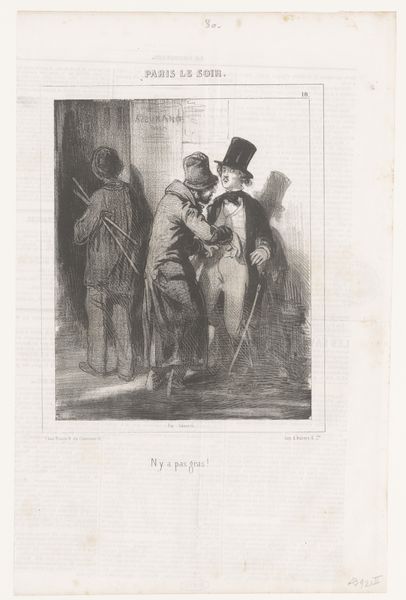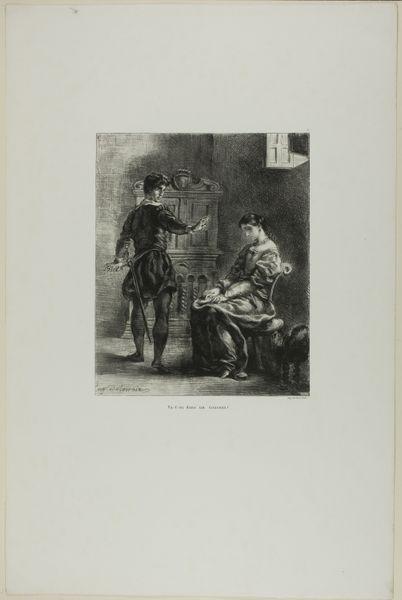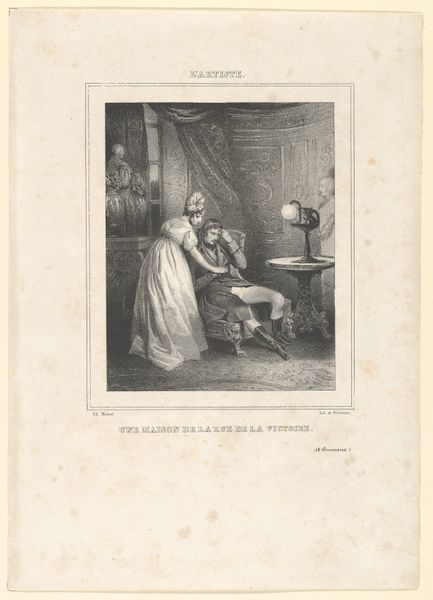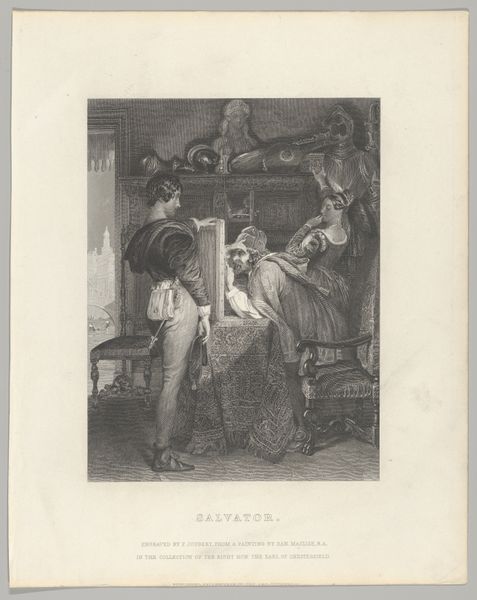
drawing, lithograph, print, etching
#
drawing
#
aged paper
#
narrative-art
#
lithograph
# print
#
etching
#
old engraving style
#
figuration
#
romanticism
#
19th century
#
genre-painting
Dimensions: height 360 mm, width 273 mm
Copyright: Rijks Museum: Open Domain
Curator: We're looking at "Woman with Cards and Two Lovers," created in 1841 by Paul Gavarni. It's a lithograph, a type of printmaking, demonstrating the use of drawing and etching to achieve these details. Editor: The paper is gorgeous. That aged quality adds so much mood, a wistful romance, almost, with a slightly melancholy vibe, wouldn't you agree? Curator: The aging definitely contributes. Examining the context, prints like these were relatively inexpensive, mass-produced images made accessible to a broader audience. The availability impacts what's created. It facilitated this new access of genre painting that depicted social encounters. Editor: A triangle of yearning and plotting unfolds before us! I wonder, is the woman deciding who to bestow her affections on, or maybe which one she's going to swindle out of his fortune? It looks a little like one of the players isn’t very pleased. Curator: It’s important to think about labor too. This kind of image increased the demand of artisans who produced the plates, prints, papers – the materiality is inseparable from the artistic statement. Romanticism is generally very sentimental, so is that what’s happening in this image? Or is Gavarni being critical of his subjects by titling the series Les Lorettes – the name given to Parisian courtesans at that time. Editor: Interesting…It's less a romantic yearning and more an analysis of commerce, that's true. And this composition is quite clever—dividing the scene with one character looming, while the lady and the man at her feet seem connected, literally grounded. It creates that sense of hierarchy, or… precariousness, you might say. It captures, really, the essence of an awkward romantic impasse. Curator: And seeing it as a romantic impasse perhaps misses how these prints challenged art’s more limited definitions and found a space somewhere in-between high art and commodity, revealing the relationship between labor, art and a burgeoning mass audience. Editor: Right. This wasn't just about artistic expression; it was about making and circulating an idea of "art" that also created an artistic social class that didn't exist prior. What to take away… this deceptively simple image is rich in social context, brought to life by skilled craftsmanship and historical conditions, yes. It is all that – but also such a clever depiction of human relationships. Curator: Precisely. It shows that what is visible depends on the processes through which an image becomes visible, on material and commercial culture, and on us and our specific relationship to it all.
Comments
No comments
Be the first to comment and join the conversation on the ultimate creative platform.
